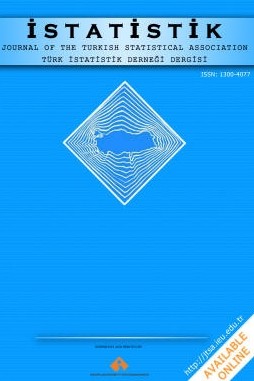REGIONAL CRIME ANALYSIS OF TURKEY: A TIME SERIES APPROACH
REGIONAL CRIME ANALYSIS OF TURKEY: A TIME SERIES APPROACH
In this study, the most common types of crime in 7 different geographical regions of Turkeyhave been analyzed via time-series approach. The purpose of the study is; to put forth the most appropriatetime series models for each geographical region and make forecasts for the crime rates. In the analysis; thecrime data obtained from official sources covering the years 2001-2010 have been used. The stationarity of 7regions has been tested and the most appropriate time series model for each region has been determined. Thevalidity of the obtained time series models has been tested and the official data for 2011 have been comparedwith the forecasts made. As a result, importance and effectiveness of the forecasts obtained from the timeseries models were given. The availability of the time series approach to crime forecasting was shown forplanning security
Keywords:
Time Series Analysis, Turkeys Crime Rates, Crime Prevention Security, Forecast,
___
- Akdi, Y.(2010). Zaman Serileri Analizi: Birim K¨okler ve Kointegrasyon, Gazi Kitapevi, In Turkish, Ankara.
- Akku¸s, Y. (2003). Su¸cun Ekonomik Analizi: T¨urkiye ¨Orne˘gi, Atat¨urk ¨Universitesi Sosyal Bilimler
- Enstit¨us¨u Y¨uksek Lisans Tezi, In Turkish, Erzurum. Andrienko, Y. (2001). Explaining Crime Growth in Russia During Transition: Economic and Crimino- metric Approach, Centre for Economic and Financial Research, Moscow, February.
- Aslan, A., ¨Ocal, O. (2012). T¨urkiye’de Su¸c Oranlarının Devamlılı˘gı, Ni˘gde ¨Universitesi, ˙Iktisadi ve ˙Idari
- Bilimler Dergisi, In Turkish, 5(1), 85-92. Bal, A.M. (2003). Modern Devlet ve G¨uvenlik, IQ K¨ult¨ur Sanat Yayıncılık, In Turkish, ˙Istanbul.
- Beki, C., K. Zeelenberg and N. Fielding. (1999). An Analysis of the Crime Rate in the Netherlands, 1993, British Journal of Criminology, Oxford, 39(3), 401-415.
- Cook, J., Cook, S. (2011). Are US Crime Rates Really Unit Root Processes?, Journal of Quantitative Criminology, 27 299-314.
- C¸ ilingirt¨urk, A. M. (2011). ˙Istatistiksel Karar Almada Veri Analizi, Ankara, Se¸ckin Kitapevi.
- Dickey, D. A. and Fuller, W. A. (1979). Distribution of the Estimators for Autoregressive Time Series with a Unit Root, Journal of the American Statistical Association, 74.
- Deadman, D. (2000). Forecasting Residential Burglary, Public Sector Economics Research Centre,
- Department of Economics, University of Leicester, February. G¨okta¸s, ¨O. (2005). Teorik ve Uygulamalı Zaman Serileri Analizi, Be¸sir Kitapevi, In Turkish, ˙Istanbul.
- Gujarati, D.N. (2003). Basic Econometrics, McGraw-Hill, New-York.
- ˙I¸cli, T. (2007). Kriminoloji, Se¸ckin Yayınevi, In Turkish, 7. Baskı, Ankara.
- Kaygısız, M., Sever, H. (2006). Su¸c Analizi, Adalet Yayınevi, In Turkish, Ankara.
- Kirchgassner, G. and Wolters, J. (2007). Introduction to Modern Time Series Analysis, New York, Springer.
- Sookram, S., Basdeo, M., Sumesar-Rai, K., Saridakis, G. (2010). Serious Crime in Trinidad and Tobago:
- An Empirical Analysis Using Time-Series Data between 1970-2007, Journal of Eastern Caribbean Stud- ies, 35(1).
- Sutherland, E.H., Cressey, D.R. (1966). Principles of Criminology, J.B. Limpincott Company, New York.
- S¸anlı, S. F. (1998). T¨urkiye’de Su¸cların Yapısını Etkileyen Sosyo-Ekonomik Fakt¨orler (Unpublished Mas- ter’s Thesis), Ankara, In Turkish, Devlet ˙Istatistik Enstit¨us¨u.
- Williams, F.P., McShane, M.D. (1999). Criminological Theory, USA: Prentice Hall.
- ISSN: 1300-4077
- Başlangıç: 1998
- Yayıncı: Başbakanlık
Sayıdaki Diğer Makaleler
REGIONAL CRIME ANALYSIS OF TURKEY: A TIME SERIES APPROACH
Yunus Emre KARAMAOĞLU, Yılmaz AKDİ.
